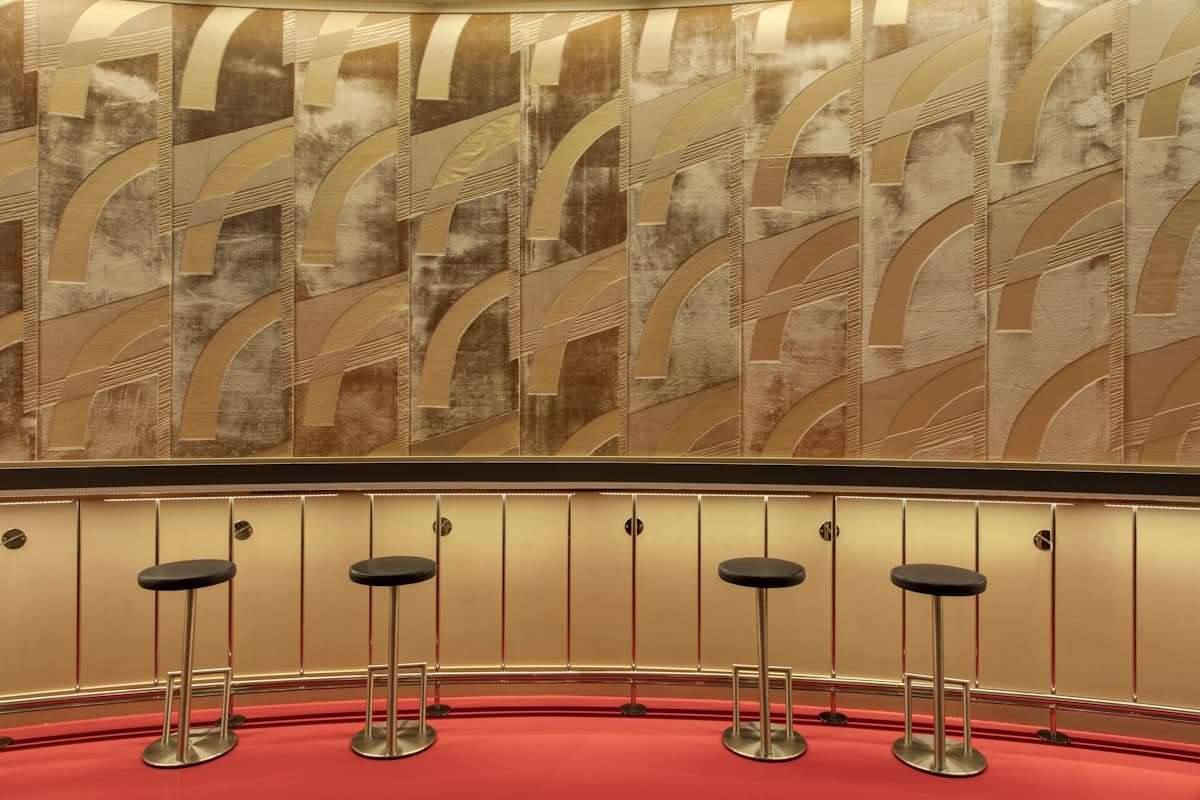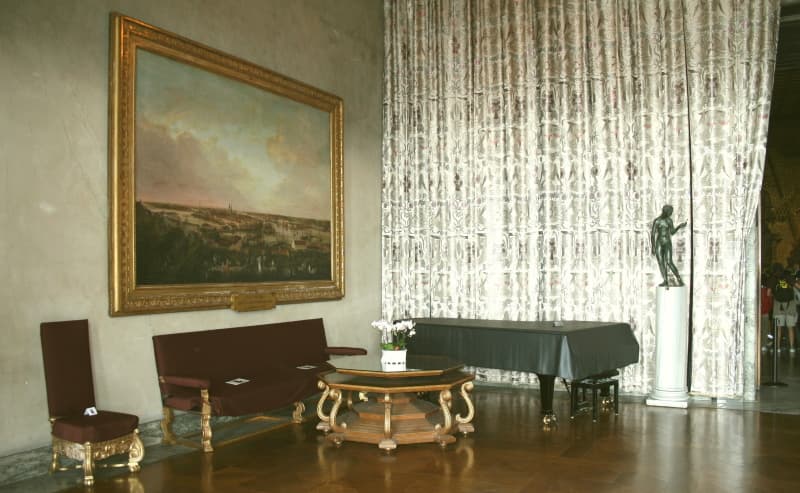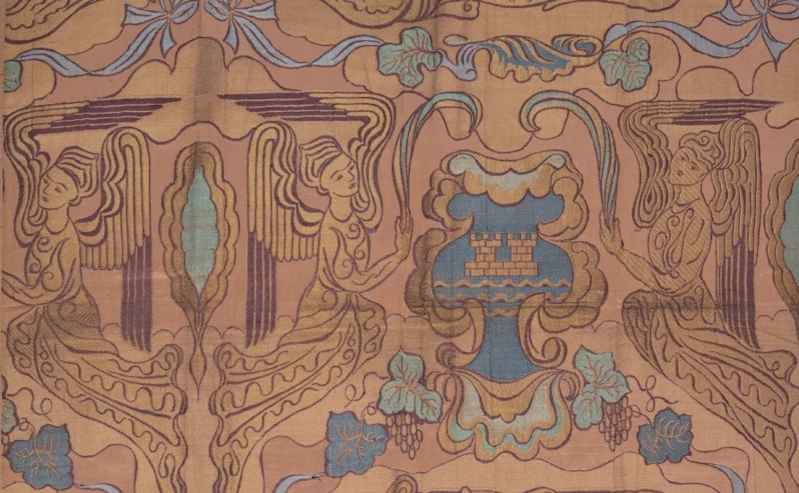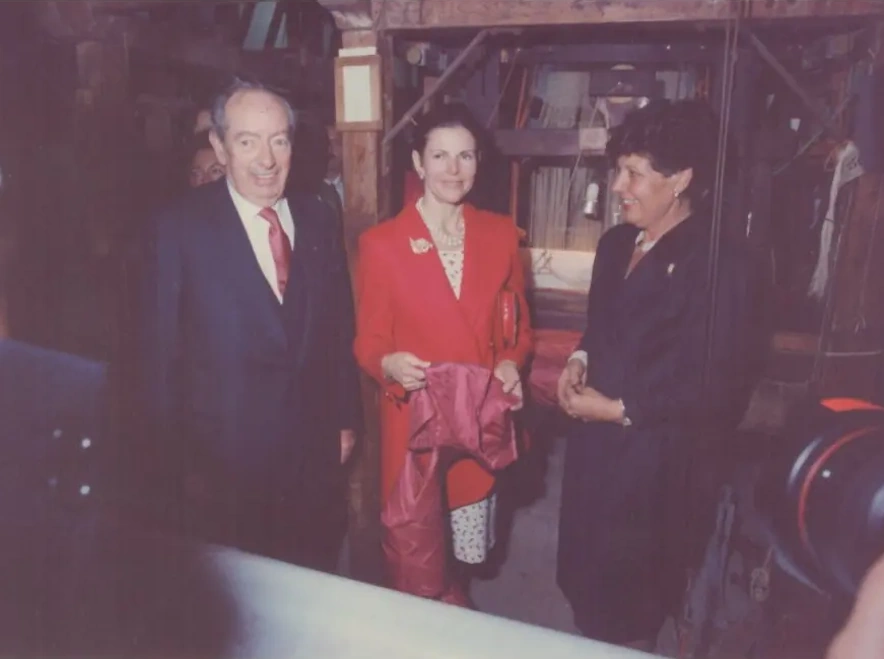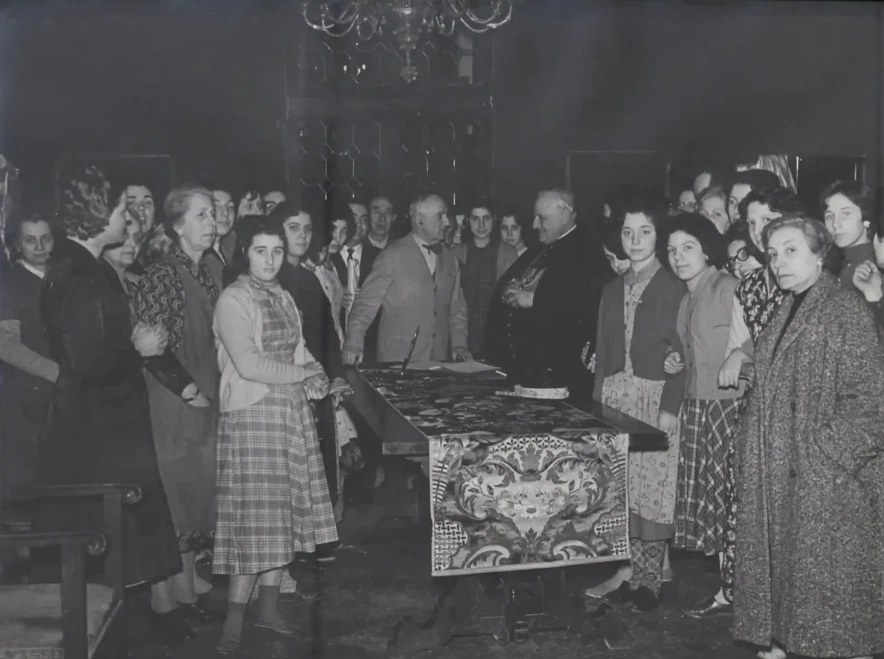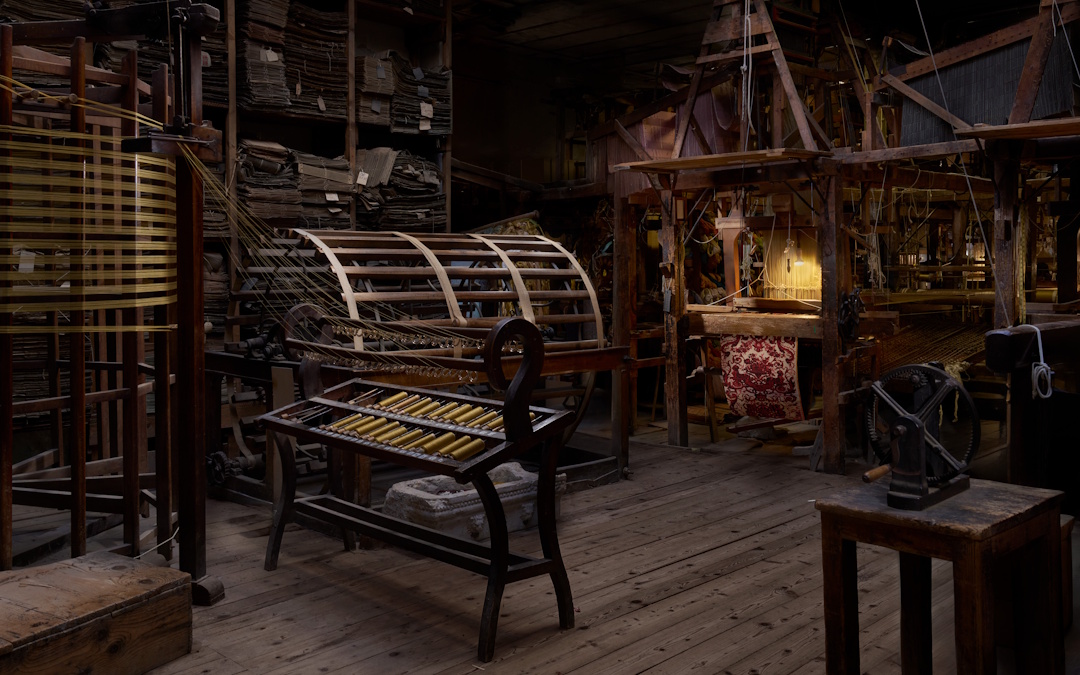Our story is deeply rooted in the heart of Venice, woven from threads, skilled hands, and visions that have been passed down from generation to generation. This year, we proudly celebrate the 150th anniversary of the founding of Tessitura Luigi Bevilacqua, paying tribute to the visionary pioneers of an adventure that has brought the beauty of Venetian fabrics to the world.
The origins: Luigi Bevilacqua and the early years in Castello
It all began in 1875, when Luigi Bevilacqua, heir to a long Venetian tradition of master weavers, decided to found his own company. Our first headquarters were located in the Castello district, at Fondamenta San Lorenzo 5074, where Luigi, together with his partner Giovanni Battista Gianoglio, took over the looms from the Bistort company, an old weaving factory. From those hand-operated looms, steeped in centuries of tradition, the first Bevilacqua fabrics came to life.
Unfortunately, a fire destroyed part of the archive and forced the company to move, but it did not extinguish the determination to continue. The new headquarters were found in the prestigious Palazzo Labia, in Campo San Geremia, where we moved in 1892. It was a symbolic location, one of the most beautiful buildings in the city, overlooking the Ponte delle Guglie, along a route loved by Venetians and visitors on their way to St. Mark’s Square. Around that same time, we opened a store in San Bartolomeo 5550, strengthening the connection between our production and the commercial life of Venice.
The birth of a family business
In 1895, with Gianoglio’s retirement, the company passed entirely into Luigi Bevilacqua’s hands. From that moment on, our weaving mill took on the character of a true family business, where skills and passion were intertwined like the threads on our looms.
By 1897, Luigi’s sons had taken on key roles within the company: Vincenzo, the eldest, oversaw administration; Antonio directed the workshop and the artistic side of production; and Angelo handled public relations, bringing our fabrics beyond the borders of Venice.
Even then, our production was extensive and refined, including soprarizzo velvets, gold, silver, and silk fabrics, brocades, lampas, damasks, trimmings, and liturgical vestments. This is further evidenced by an advertising flyer still preserved today at our headquarters in Santa Croce, dated between 1892 and 1895, when we were still at Palazzo Labia. This document not only describes what we produced, but also conveys the founders’ experience and reveals how, less than twenty years after its inception, the weaving mill was already renowned for the quality and variety of its products.
The Santa Croce headquarters and opening up to the world
In 1905, our factory finally found its permanent home in the Santa Croce district, where our looms still stand today. The building took on its current appearance in 1919, when Angelo Bevilacqua purchased and renovated it.
Meanwhile, our family grew, and with it, the horizons of the company expanded. Cesare Bevilacqua, the youngest of Luigi’s sons and grandfather of the current owners, joined the company in the early 1900s. His marriage to Swedish countess Glenny Charlotte von Redlick in 1908 opened up new markets in Northern Europe. Thanks to her and collaborations with artists such as painter Maja Sjöström and architect Carl G. Bergsten, our velvets were chosen to decorate prestigious venues such as the Hall of the Three Crowns in Stockholm City Hall and the Gothenburg City Theater.
Soprarizzo Deco in the Gothenburg City Theater
During these years, our weaving mill established itself as a center of excellence, renowned not only for its craftsmanship but also for its ability to combine tradition and artistic innovation. This is also demonstrated by the title of Papal Supplier, which our company has held since at least 1953, and the visits of cardinals, patriarchs, including the future Pope Cardinal Roncalli, and royal guests, including Queen Silvia of Sweden, who graced our workshop with their presence.
The living legacy of tradition
Today, as we celebrate our 150th anniversary, we carefully preserve the memory of those early years and the people who made them possible. Our historical archive, officially recognized as a collection of exceptional cultural interest, holds letters, drawings, registers, and photographs that recount a century and a half of Venetian textile art. It has recently undergone a major reorganization, allowing us to rediscover many details of our history, from production documents to correspondence with customers and artists from all over the world.
Today, as then, the Bevilacqua family continues to run the weaving company with the same spirit as their ancestors. Our purpose remains unchanged: to share with the world the beauty, refinement, and authenticity of Venetian fabrics, continuing to weave, thread by thread, a legacy spanning 150 years.



